Cancer-associated cells release citrate to support tumour metastatic progression
- PMID: 33758075
- PMCID: PMC7994318
- DOI: 10.26508/lsa.202000903
Cancer-associated cells release citrate to support tumour metastatic progression
Abstract
Citrate is important for lipid synthesis and epigenetic regulation in addition to ATP production. We have previously reported that cancer cells import extracellular citrate via the pmCiC transporter to support their metabolism. Here, we show for the first time that citrate is supplied to cancer by cancer-associated stroma (CAS) and also that citrate synthesis and release is one of the latter's major metabolic tasks. Citrate release from CAS is controlled by cancer cells through cross-cellular communication. The availability of citrate from CAS regulated the cytokine profile, metabolism and features of cellular invasion. Moreover, citrate released by CAS is involved in inducing cancer progression especially enhancing invasiveness and organ colonisation. In line with the in vitro observations, we show that depriving cancer cells of citrate using gluconate, a specific inhibitor of pmCiC, significantly reduced the growth and metastatic spread of human pancreatic cancer cells in vivo and muted stromal activation and angiogenesis. We conclude that citrate is supplied to tumour cells by CAS and citrate uptake plays a significant role in cancer metastatic progression.
© 2021 Drexler et al.
Conflict of interest statement
ME Mycielska and EK Geissler are inventors on the Patent Application no. EP15767532.3 and US2020/408741 (status patent pending) and US2017/0241981 (patent issued) “The plasma membrane citrate transporter for use in the diagnosis and treatment of cancer” owned by the University Hospital Regensburg. No potential conflicts of interest are disclosed by the other authors.
Figures
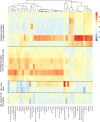


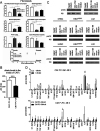
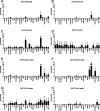
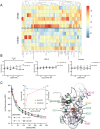
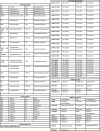

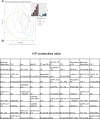
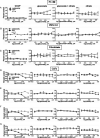


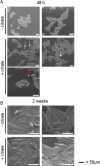
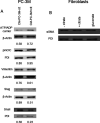
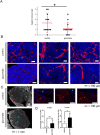
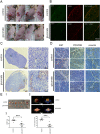
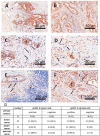
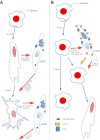
Similar articles
-
Extracellular Citrate Affects Critical Elements of Cancer Cell Metabolism and Supports Cancer Development In Vivo.Cancer Res. 2018 May 15;78(10):2513-2523. doi: 10.1158/0008-5472.CAN-17-2959. Epub 2018 Mar 6. Cancer Res. 2018. PMID: 29510993
-
Metastasis-associated fibroblasts promote angiogenesis in metastasized pancreatic cancer via the CXCL8 and the CCL2 axes.Sci Rep. 2020 Mar 25;10(1):5420. doi: 10.1038/s41598-020-62416-x. Sci Rep. 2020. PMID: 32214219 Free PMC article.
-
Expression of the plasma membrane citrate carrier (pmCiC) in human cancerous tissues-correlation with tumour aggressiveness.Front Cell Dev Biol. 2024 Jul 3;12:1308135. doi: 10.3389/fcell.2024.1308135. eCollection 2024. Front Cell Dev Biol. 2024. PMID: 39022761 Free PMC article.
-
The dual role of citrate in cancer.Biochim Biophys Acta Rev Cancer. 2023 Nov;1878(6):188987. doi: 10.1016/j.bbcan.2023.188987. Epub 2023 Sep 17. Biochim Biophys Acta Rev Cancer. 2023. PMID: 37717858 Review.
-
Extracellular citrate and metabolic adaptations of cancer cells.Cancer Metastasis Rev. 2021 Dec;40(4):1073-1091. doi: 10.1007/s10555-021-10007-1. Epub 2021 Dec 21. Cancer Metastasis Rev. 2021. PMID: 34932167 Free PMC article. Review.
Cited by
-
Tissue-Specific Downregulation of Fatty Acid Synthase Suppresses Intestinal Adenoma Formation via Coordinated Reprograming of Transcriptome and Metabolism in the Mouse Model of Apc-Driven Colorectal Cancer.Int J Mol Sci. 2022 Jun 10;23(12):6510. doi: 10.3390/ijms23126510. Int J Mol Sci. 2022. PMID: 35742953 Free PMC article.
-
Editorial: Metabolite and Nutrient Transporters in Cancer-Cell Metabolism: Role in Cancer Progression and Metastasis.Front Cell Dev Biol. 2022 Apr 25;10:885717. doi: 10.3389/fcell.2022.885717. eCollection 2022. Front Cell Dev Biol. 2022. PMID: 35547821 Free PMC article. No abstract available.
-
The immunometabolic ecosystem in cancer.Nat Immunol. 2023 Dec;24(12):2008-2020. doi: 10.1038/s41590-023-01675-y. Epub 2023 Nov 27. Nat Immunol. 2023. PMID: 38012409 Review.
-
Deep Learning-Based Image Analysis for the Quantification of Tumor-Induced Angiogenesis in the 3D In Vivo Tumor Model-Establishment and Addition to Laser Speckle Contrast Imaging (LSCI).Cells. 2022 Jul 28;11(15):2321. doi: 10.3390/cells11152321. Cells. 2022. PMID: 35954165 Free PMC article.
-
Metabolic Effects of the Cancer Metastasis Modulator MEMO1.Metabolites. 2025 Apr 17;15(4):277. doi: 10.3390/metabo15040277. Metabolites. 2025. PMID: 40278406 Free PMC article.
References
-
- Azenshtein E, Luboshits G, Shina S, Neumark E, Shahbazian D, Weil M, Wigler N, Keydar I, Ben-Baruch A (2002) The CC chemokine RANTES in breast carcinoma progression: Regulation of expression and potential mechanisms of promalignant activity. Cancer Res 62: 1093–1102. - PubMed
Publication types
MeSH terms
Substances
LinkOut - more resources
Full Text Sources
Other Literature Sources
Medical
